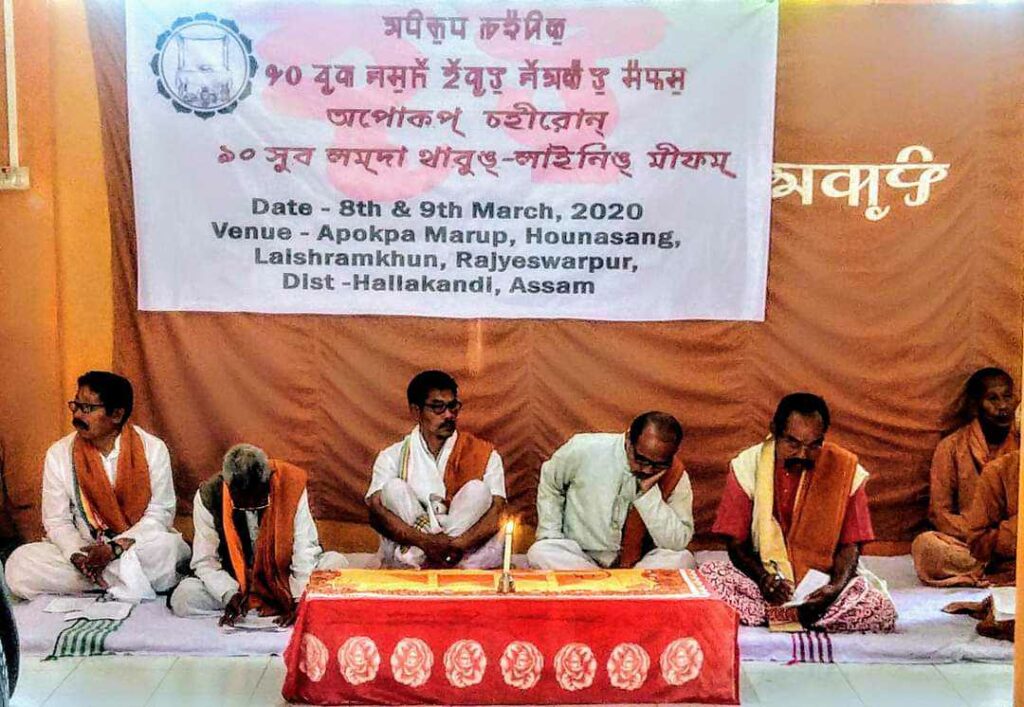The Naoriya Phulo script is also known as the Naoria script or the Invented Meitei Yelhou Mayek script or the Invented Meetei Yelhou Mayek script.
Wikipedia writes: “The invented script of Naoriya Phulo of Cachar was sometimes interpreted as a divine gift. According to a legend, it was presented to him in his trance along with a text named the “Shakok Salai Thiren” (written in this script). During the 1930s, using his own invented script, Naoriya Phulo challenged the then official script for Meitei language. Naoriya Phulo and his organization named Apokpa Marup used to claim the newly invented script as the original old script for Meitei language.“
In other words, Naoriya Phulo was an early actor in the movement that pressed for the reintroduction of a Meitei script in Manipur. It seems possible that this script might have acquired considerable traction but for doubts about its origins.
Wehengbam Singh, in The History of Manipur: An Early Period, writes: “It may be mentioned here that some of the revivalist groups specially the followers of Naoriya Phulo claimed a script to have been used by the Meiteis in early days. They circulated leaflets to the general public and the Meitei Mayek Committee of 1973 A.D. as well, demanding the adoption of that script as Meitei script. The script appears to be a modification of Devanagari and also appears to have included some similar approved Meitei scripts along with some alphabets very similar to the Bengali script. Some scholars who examine the script feel that was an invention. There is room for doubt of adding some characters invented by them. They could not give proper evidence of that script being adopted in some periods or other. On the other hand the numerals appear to have been taken from different scripts of India.”
According to Maibam Singh in Reconstructing a Meitei Identity: A Case Study of Script and Language Movement of Naoria Phulo and Apokpa Marup, the Naoriya Phulo script failed to gain traction because the demand to adopt it coincided with a similar demand by multiple schools of thought to reify a unified Meitei script.
“The core difference between these competing perspectives focused on the number of characters it should encompass. An expert committee was formed in 1978 to analyze all available Meitei scriptures and puyas, and concluded that the script should comprehensively contain 27 alphabets as opposed to the 36 proposed by Phulo. The Manipur Official Language Bill was passed on 12 April 1979 and thereafter sought to promote the unified Metei Mayek script,” which they did to such good effect that the Meitei Mayek script is now an official script of the state.
“Finally,” reports Wehengbam Singh, “that [Naoriya Phulo ] revivalist group dropped their demand,” and the script seems to have fallen off the public radar. Curiously, though, despite its defeat at the hands of the committee, the script did not disappear. Biswajit Mandal reports that it is still used by some religious groups in Hailakandi, South Assam.

24.6809° N, 92.5648° E